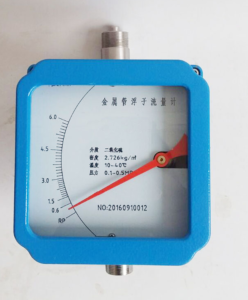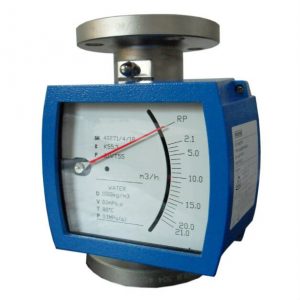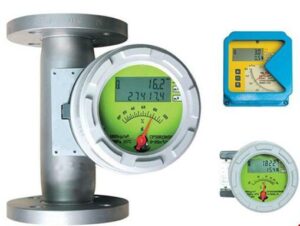Rotor flowmeter used in small pipe diameter and low flow rate. Commonly used instrument caliber 40-50mm below, the smallest caliber to 1.5-4mm. suitable for measuring low flow rate small flow rate and liquid.
For example, caliber 10mm below the nominal pipe diameter of the full flow of glass tube rotor flowmeter, flow rate only in 0.2-0.6m/s between, or even below 0.1m/s; metal rotor flowmeter and caliber greater than 15mm glass tube rotor flowmeter slightly higher, the flow rate in 0.5-1.5m/s between.

Rotor flowmeter can be used for lower Reynolds number, the choice of viscosity is not sensitive to the shape of the rotor, circulation ring gap at the Reynolds number as long as greater than 40 or 500, Reynolds number change flow coefficient that remains constant, that is, the fluid viscosity changes do not affect the flow coefficient. This value is much lower than the standard orifice plate and other throttling differential pressure type instrument minimum Reynolds number 104-105 requirements.
Most rotameter meters do not have an upstream straight section requirement or require a low upstream straight section. The rotameter has a wide flow range of degrees, typically 10:1, down to 5:1, and up to 25:1. The output of the flow detection element is close to linear.

The pressure loss is low. The glass tube rotameter is simple in structure and inexpensive.
Easy to use as long as the flow is indicated in the field, the disadvantage is the risk of fragile glass tubes, especially unguided structure rotors for gases. Metal rotameter without risk of breakage of the conical tube.
Wide temperature and pressure range compared to glass tube rotameters. Most constructional rotameters can only be used for pipe installations with vertical flow from the bottom up.
Like every other device, the metal rota meter has its pros and cons, as the article reflects.
There are some advantages of rotameter which are given below.
- The rotameter price is relative
- It provides a linear scale.
- It has good accuracy for low and medium flow rates.
- The pressure loss is nearly constant and small.
- Usability for corrosive fluid.
- It has good Rangeability.
- It is easily equipped with alarms and switches or any transmitting devices.
- It also measures the flow rate of corrosive fluids.
- There is an availability of viscosity-immune floats.
- It can be used in some light slurry measurements.

There are some disadvantages of the rotameter which are given below.
- When opaque fluid is used, the float may not be visible.
- It has not done well in pulsating services.
- Glass tube types are subjected to breakage.
- It must be installed in a vertical position only.
- It is not suitable for pulsating services.
- Generally, it is limited to small pipe services.
- It is limited to low temperatures.
- Measurement accuracy is not so high.
- It requires in-line mounting.
